Queen Mary's Hospital
Roehampton Lane, SW15 5PN
Medical dates:
Medical character:
1915 - current
Rehabilitation. Later, acute. Now, community.
Established as a place of rehabilitation for sailors, soldiers and airmen who had lost limbs during war service, the Queen Mary Convalescent Auxiliary Hospital was founded in 1915 from an idea by Mrs. Mary Eleanor Gwynne Holford. She had been moved by the plight of amputees while walking through the wards of Queen Alexandra's Military Hospital, realising that they should not be discharged home too quickly from hospital without the proper fitting of an artificial limb. She enlisted the help of Viscountess Falmouth and Sir Charles Kenerdine to raise funds by press and public appeal for the establishment of a rehabilitation hospital and set about finding a suitable location. A stately home was chosen - Roehampton House - which was then being used as a billet for soldiers, having been requisitioned by the War Office. The owner, Mr. Kenneth Wilson (of Ellerman's Wilson Line) who had bought the house in 1915, placed it at their disposal, rent-free, for this purpose. Queen Mary had expressed a wish to become a patron, and the Hospital was named after her.
Five months after its conception, the Hospital opened on 28th June 1915, initially with 180 beds. Patients stayed some 6 to 10 weeks (later this was reduced to 3 weeks).
During Christmas 1915 the London/1 Voluntary Aid Detachment took over the duties of the male staff, enabling them to take several days leave.
Originally intended to have only 200 beds, the Hospital was forced to expand rapidly because of increasing military casualties. By 1917 some 11,000 officers and men had been treated since it had opened in 1915, and new patients were arriving at the rate of 100 a week. By the end of WW1 in 1918 it had 900 beds and a waiting list of over 4,000 patients. Of 42,000 limbless soldiers, some 26,000 had received prosthetic limbs at the Hospital, which had gained an international reputation as a leading limb-fitting and rehabilitation centre.
In 1920 the governors of the Hospital bought Roehampton House from Mr and Mrs Wilson. Soon factories and workshops for making prosthetic limbs were established within and around the site of the Hospital. By 1922 civilian amputees, victims of industrial accidents, were also admitted.
In 1925 its name was changed to Queen Mary's (Roehampton) Hospital. The Ministry of Pensions agreed to bear the costs of any major rebuilding works if the Hospital would permit it to use any of its beds, excepting for patients with tuberculosis or mental illness (under this agreement the Hospital's limbless patients would still have priority treatment).
During the interwar years the Hospital extended its scope of work to include other special treatments for those disabled at war.
During 1938-1939 almost 11,000 war pensioners attended for artificial limbs, as well as 355 civilians; 16,251 limbs were sent by post. In 1939 new artificial limb factories opened at the Hospital, and plans were approved for the provision of an additional 550 beds.
At the outbreak of WW2 the Ministry of Pensions assumed overall responsibility for the Hospital areas of the Roehampton estate. The Hospital at this time had 700 beds. The Limb Fitting Centre and factory were expanded, prompted by memories of 40,000 men losing limbs in the previous war. However, in the event, a far lower number of amputees were received. Better surgical techniques developed during WW1, better wound management and treatment of infection, chemotherapy and blood transfusions all helped to reduce necessary amputations during WW2 to about half those of WW1. However, more than 20,000 war disabled servicemen were treated, as well as 2,000 civilian casualties. During the war the Hospital also dealt with maxillofacial injuries and fractures as well as the rehabilitation of amputees. It had departments for plastic surgery, neurosurgery and general medicine, and a Department of Tropical Diseases was added to treat servicemen who had been stationed in countries where such diseases were endemic. The Hospital suffered some bomb damage during the war and, in 1940 and 1944, Roehampton House was damaged.
The Hospital did not initially join the NHS in 1948, but began to treat an increasing number of NHS patients. In 1953 the Ministry of Pensions also took control of the Limb Fitting Centre. In 1960 the Hospital joined the Westminster Hospital Group, finally becoming an NHS Hospital in 1961. It was renamed Queen Mary's University Hospital, because of its connections with the Medical Schools of St George's Hospital, Charing Cross Hospital and Westminster Hospital. In 1957 the Hospital took over the three-storey villa to the north of its site and converted it into a mental health centre.
In 1983 the 30 acre Roehampton estate was bought by the NHS. However, Roehampton House had to be vacated following the discovery of asbestos in poor condition on all the heating and domestic hot water pipework. After the removal of the asbestos, the building was left in a state of dilapidation, requiring extensive restoration work.
Roehampton House was re-opened by Princess Alexandra on 15th June 1987.
The Douglas Bader Centre was opened in 1993 by Princess Diana. The Centre was financed by the Douglas Bader Foundation, set up in memory of the WW2 fighter pilot who died in 1982. (Douglas Bader had lost both legs during a flying accident in 1931 and had received treatment at Roehampton.)
By the early 1990s the Hospital had 450 acute beds, but services began to be run down. In 1997 the Accident & Emergency Department closed and acute services transferred to Kingston Hospital. In 1998 the South West London Community NHS Trust established its headquarters at the Hospital.
It was decided that an acute hospital was no longer necessary at this site as most of the patients were elderly. The mental health centre at the north of the site was demolished in 2000 and the site cleared for erection of a community hospital.
Construction began in 2003. The new £55m community hospital was officially opened in 2006 by the Duke of Gloucester. It has 130 beds, 50 for elderly patients and for those in need of intermediate care, 20 for patients needing limb fitting and rehabilitation, and 69 for mental health care.
Present status (January 2008) |
|---|
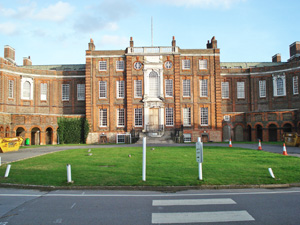
Roehampton House, built in 1710-1712, is now Grade I listed.

Roehampton House from the north.
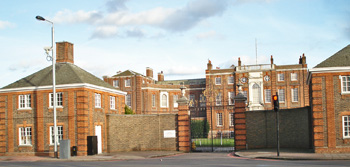
The two gate lodges with Roehampton House in the background.
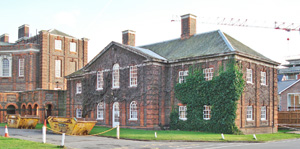
Roehampton House from the south.

Surviving former Hospital buildings (above and below).
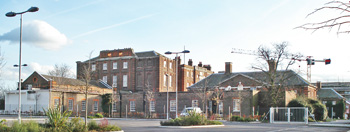
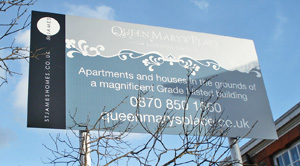
Signage offering housing in the new development of Queen Mary's Place, within the former gardens of Roehampton House.
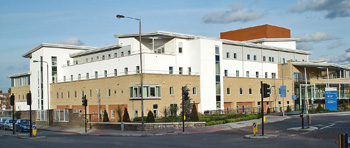
The current Queen's Mary's Hospital.

The south side of the new Hospital.
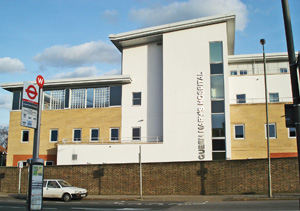
The main entrance is on the south side.
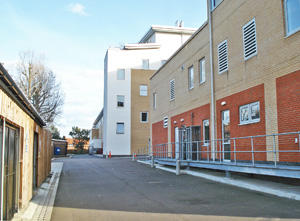
The north side of the Hospital.
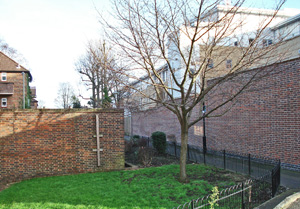
The north side of the Hospital with new housing encroaching.
References (Accessed 21st November 2015)
(Author unstated) 1917 News in brief. The Red Cross 4, 164.
(Author unstated) 1988 Conservation in Action: Roehampton House. London, Wandsworth Borough Council.
Alper H (ed) 1997 A History of Queen Mary's University Hospital Roehampton. London, The Trust.
Unwin S (ed) 1920 The Work of V.A.D. London 1 during the War. London, George Allen & Unwin Ltd.
http://blog.maryevans.com
http://patrickbaty.co.uk
www.aim25.ac.uk
www.danielfearon.com
www.flickr.com (1)
www.flickr.com (2)
www.historicengland.org.uk
www.iwm.org.uk (1)
www.iwm.org.uk (2)
www.londongardensonline.org.uk
www.museumsassociation.org
www.pppforum.com
www.publications.parliament.uk
www.sciencemuseum.org.uk
www.theyworkforyou.com